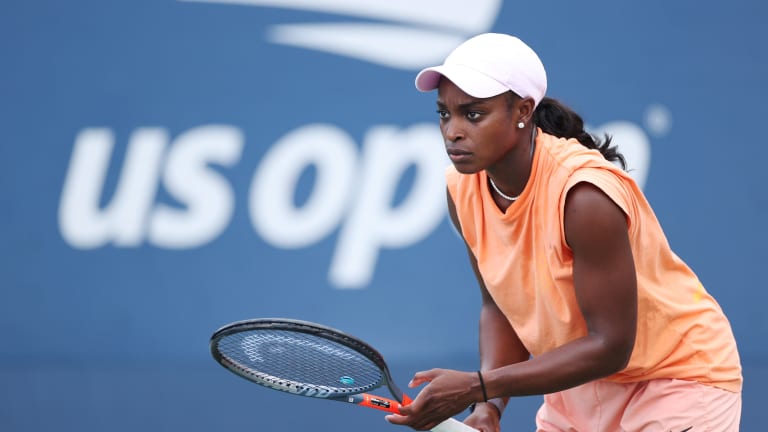Tennis.com Interview
Sloane Stephens reveals the data and insights that take her game to the next level
By Aug 30, 2022Tennis.com Interview
Why Alex de Minaur and Marta Kostyuk changed racquets mid-season
By Aug 24, 2025Tennis.com Interview
Alejandro Davidovich Fokina enjoyed his wedding so much, he wants to plan another
By Jul 24, 2025Tennis.com Interview
Never judge, just love: Jessica Pegula and her dogs have been a winning pair
By Apr 24, 2025Tennis.com Interview
Danielle Collins launches iconic richsport merch collab
By Mar 07, 2025Tennis.com Interview
From Babolat to Wilson: Andy Roddick goes in-depth on his new racquet
By Dec 15, 2024Tennis.com Interview
TenniStory: In Boca Raton, Kyle LaCroix is setting the standard for players and coaches alike
By Dec 05, 2024Tennis.com Interview
Grigor Dimitrov shares his most important tip for starting the day off right
By Oct 24, 2024Tennis.com Interview
Roger Federer on designing racquets—and an unforgettable bucket-list item in Central Park
By Sep 19, 2024Tennis.com Interview
“Unlucky” Yoshihito Nishioka talks meltdown, game penalty in Cincinnati loss to Hubert Hurkacz
By Aug 15, 2024Sloane Stephens reveals the data and insights that take her game to the next level
The 2017 US Open champion caught up with Baseline to discuss everything from self-care to periods to fitness tracking—and how it all factors into her holistic approach to professional tennis.
Published Aug 30, 2022
Advertising

Stephens overcame an early wobble against Greet Minnen and raised her level to complete a 1-6, 6-3, 6-3 victory in the US Open first round.
© AFP via Getty Images
Advertising
!["Part of being a leader is being able to communicate my vision for different projects and trust that [my team] can keep progressing when I’m focused on what I need to do for my tennis."](https://images.tennis.com/image/private/t_16-9_768/f_auto/v1661903986/tenniscom-prd/ijrhne7ovdx5r85dajcr.jpg)
"Part of being a leader is being able to communicate my vision for different projects and trust that [my team] can keep progressing when I’m focused on what I need to do for my tennis."
© Getty Images
Advertising

"I love playing on US soil, and there’s nothing like the New York crowd."
© Getty Images